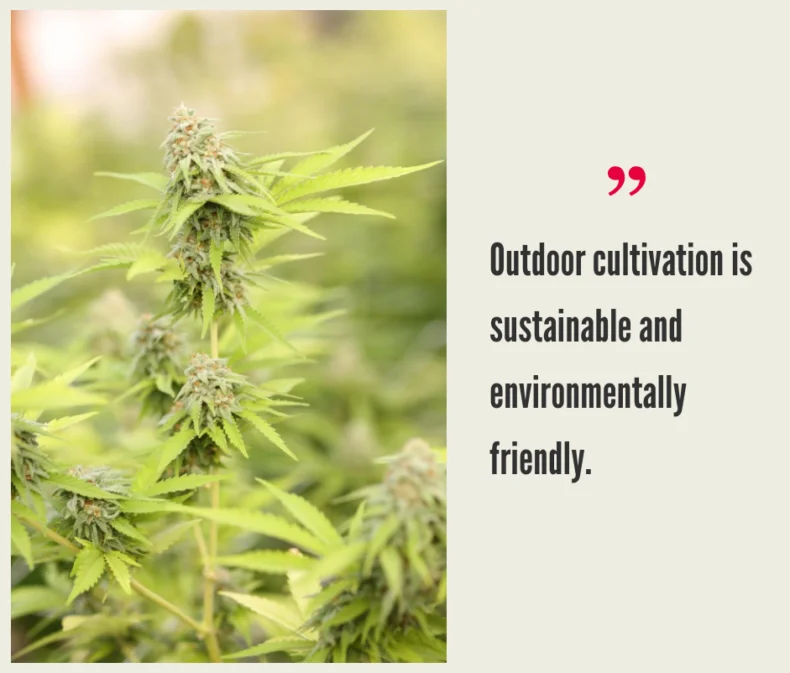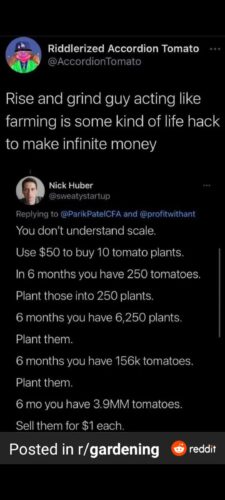Growing a plant costs vary depending on factors such as plant type, location, and growing methods, typically ranging from $1 to $30 or more per plant. Is the thought of growing a plant on your mind?
Before you embark on this green journey, it’s essential to have an understanding of the cost involved. While the cost of growing a plant depends on various factors such as the type of plant, your location, and the methods you choose, it generally falls within the range of $1 to $30 or even more per plant.
This cost encompasses expenses like seeds or seedlings, soil, containers, fertilizers, water, and any additional equipment or tools you may need. Whether you’re interested in growing flowers, vegetables, or herbs, it’s important to weigh the expenses against the benefits of nurturing and caring for your own plants. We will explore the various factors that influence the cost of growing a plant and offer insights on how to make it a cost-effective and rewarding endeavor.
Factors Affecting Cost Of Plant Growth
Factors affecting the cost of plant growth can vary depending on several key elements. Understanding Type of Plant, Growing Medium, Fertilizers and Nutrients, and Water and Utilities can help in estimating the overall expenses involved in nurturing a plant.
Type Of Plant
The cost of growing a plant is notably influenced by the specific variety or species being cultivated.
Growing Medium
The choice of growing medium impacts the cost as different mediums offer varying levels of nutrients and moisture retention.
Fertilizers And Nutrients
Fertilizers and nutrients play a significant role in the growth of plants, affecting both their health and overall cost.
Water And Utilities
Factors such as water consumption and energy utilization can substantially contribute to the total expense of plant growth.

Credit: www.leafly.com
Initial Investment In Plant Growth
Growing plants can be a rewarding and fulfilling experience, but it does require an initial investment. In this section, we’ll explore the various components that contribute to the overall cost of growing plants, including seeds or seedlings, pots or containers, and lighting and heating equipment.
Seeds Or Seedlings
Seeds or seedlings are the starting point for any plant growth endeavor. The cost of seeds can vary widely depending on the type of plant you wish to grow. If you’re on a budget, you can opt for cheaper seeds, which are usually available in bulk. However, keep in mind that cheaper seeds might have lower germination rates and lower quality.
If you prefer, you can also begin with seedlings, which are young plants that have already sprouted. While seedlings might be more expensive than seeds, they can save you time and effort in the initial growth stages. You can either purchase seedlings from a local nursery or start your own using seeds and growing trays.
Pots Or Containers
Choosing the right pots or containers is essential for the healthy growth of your plants. When selecting pots, consider the size, material, and drainage capabilities. Plastic pots tend to be more affordable and lightweight, while ceramic pots can be more aesthetically pleasing but may come at a higher cost.
Additionally, think about the size of the pots or containers you’ll need for your plants. Some plants require more space for their roots to grow, while others can thrive in smaller containers. Assess your plant’s specific requirements to determine the right pot size.
Lighting And Heating Equipment
Proper lighting and heating equipment are crucial for indoor plants or those grown in areas with limited sunlight. This is particularly important if you’re growing plants that require specific light and temperature conditions. Investing in good-quality grow lights can ensure that your plants receive the necessary amount of light for optimal growth.
Similarly, heating equipment like heat mats or heating lamps can help maintain the right temperature for your plants, especially during colder months. Consider energy-efficient options to minimize ongoing costs.
| Component | Considerations |
|---|---|
| Seeds or Seedlings | Choose based on plant type and budget. |
| Pots or Containers | Consider size, material, and drainage capabilities. |
| Lighting and Heating Equipment | Invest in appropriate lights and consider energy efficiency. |
Ongoing Costs Of Plant Growth
Growing plants can be a rewarding and fulfilling experience. However, it’s important to consider the various ongoing costs that are involved in maintaining healthy and thriving plants. These costs include maintenance and care, pest control, and additional supplies. Understanding these aspects will help you budget effectively and ensure the long-term success of your plant growth journey.
Maintenance And Care
Regular maintenance and care are crucial for keeping plants healthy and promoting optimal growth. It involves tasks such as watering, pruning, fertilizing, and providing adequate sunlight. While the exact maintenance requirements vary depending on the type of plant, it’s essential to allocate time and resources for these activities to avoid potential issues. Additionally, periodic soil testing and adjusting pH levels can be necessary to provide a suitable environment for your plants to thrive.
Pest Control
Just like any living organism, plants are susceptible to pests and diseases. Implementing effective pest control measures is vital to protect your plants and prevent significant damage. It may involve the use of organic methods like companion planting or natural pest repellents. However, some situations might require the use of commercial insecticides or treatments. Regular monitoring for signs of pests and diseases will help you identify issues early on and take timely action to safeguard your plants.
Additional Supplies
Alongside maintenance and pest control, there are often additional supplies required to support plant growth. These supplies may include planters, pots, or containers suitable for specific plants, materials for creating trellises or support structures, and gardening tools like pruners, shovels, and watering cans. Additionally, if you’re growing plants indoors, you may need to invest in grow lights or other equipment to provide adequate artificial lighting. Considering these additional supplies is essential when calculating the overall cost of growing plants.
Economic Benefits Of Growing Plants
Growing plants comes with economic benefits as the cost to grow a plant is relatively low. With minimal investment in seeds, soil, and water, the economic return from plant growth can be substantial. Additionally, growing plants at home can lead to savings on grocery expenses and contribute to a sustainable lifestyle.
Growing plants not only brings a sense of fulfillment but also offers significant economic advantages. Let’s explore the various ways it can be financially rewarding:Cost Savings On Produce
By growing your own plants, you can save on grocery expenses. Producing your own fruits and vegetables eliminates the need to purchase them, resulting in substantial cost savings.Therapeutic Value
Gardening provides stress relief and mental wellness benefits. It serves as a therapeutic activity that can enhance your overall well-being.Potential For Selling Produce
You can turn your hobby of growing plants into a profitable venture. Selling excess produce can generate income and create opportunities for entrepreneurial endeavors.Conclusion: Is Plant Growth Cost-effective?
Conclusion: Is Plant Growth Cost-Effective?
Assessing Overall Costs
Growing a plant involves various costs, including initial investment in seeds or seedlings, soil, pots, fertilizers, and water. These costs can accumulate over time and vary based on the type of plant, its growth conditions, and the climate. It’s essential to factor in ongoing expenses like pest control, mulching, and any equipment needed for cultivation.
Moreover, evaluating the costs associated with plant growth also involves considering the expense of maintenance tasks such as pruning, weeding, and watering. It’s imperative to conduct a thorough analysis of the overall costs to determine the viability of plant cultivation projects.
Long-term Benefits
While the immediate costs of plant growth may seem prohibitive, long-term benefits should not be overlooked. Establishing a garden, for instance, can lead to reduced grocery expenses as home-grown produce becomes available. Additionally, plants contribute to environmental conservation, improve air quality, and provide psychological well-being. These long-term advantages should be considered when assessing the cost-effectiveness of plant growth.
Sustainable Practices
Implementing sustainable practices such as composting, rainwater harvesting, and natural pest control methods can significantly reduce the ongoing expenses associated with plant growth. Embracing these sustainable approaches not only minimizes costs but also contributes to environmental preservation, making plant growth a cost-effective and eco-friendly endeavor.

Credit: cannabusinessplans.com

Credit: www.reddit.com
Frequently Asked Questions For How Much Does It Cost To Grow A Plant?
How Much Does It Cost To Grow Crops?
Growing crops can cost anywhere from $200 to $2,000 per acre, depending on factors like seed, fertilizer, and equipment.
What Determines The Cost Of A Plant?
The cost of a plant is determined by factors such as the plant species, its size, age, and condition. The rarity and demand for the plant also play a part. Other considerations include the cost of production, transportation, and any additional fees or charges.
What Expenses Does A Farmer Have When Growing Their Crop?
Farmers have expenses for seeds, fertilizers, pesticides, and irrigation. They also need equipment, fuel, and labor for planting, harvesting, and transportation. Other costs include land rent, insurance, and storage. Overall, farmers invest in various resources and inputs to ensure successful crop growth.
How Much Does It Cost To Produce Lettuce?
The cost of producing lettuce varies but typically ranges from $0. 50 to $1 per head. Factors include labor, seeds, soil, water, and equipment.
Conclusion
The cost of growing a plant varies based on factors like type, size, and resources. Understanding these aspects can help you budget effectively and enjoy the rewards of nurturing green life. Embrace the journey of plant cultivation with knowledge and care.
Happy gardening!
